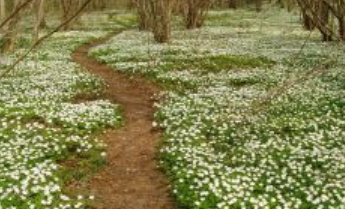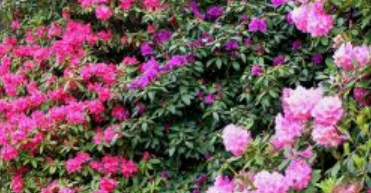On color gardens, flowers play an essential part on your very colorful garden which can also relate on our lives. Not only do they appeal to our sense of beauty and provide tremendous pleasure through their colors and fragrance, but also they are often laden with symbolic meaning.
Planning a garden offers the opportunity for much creative stimulation. It is exciting to evaluate the many features of each plant, choose the most suitable, and finalize what will go where.
These gardens are landscape based around the theme of a single color or a collection of related colors. While to some, the idea of a garden full of plants that are the same color may seem dull, the result of a color garden is often quite striking.
Blossom color is what guides most gardeners in their plant purchases and understandably so. But it is worth planning in advance how certain colors work before deciding what will go where. Creating color schemes is another area that can be considered. Schemes may involve contrasting or harmonious colors; can explore variations in tints and tones of favorite colors; rely on brights or pastels; or revolve around single colors. Of course, some gardeners eschew the idea of a color scheme entirely, preferring a splashy paintbox effect.
There are two variations of color gardens that are widely seen:
Single Color Garden

As the name implies, Single Color Gardens are built around one particular shade of one color. So, for example, a White Single Color garden would have only flowers and plants that were White.
That may seem bland at first thought, but visualize an entire garden full of white roses, white lilies, white lilies of the valley, white morning glories, moonflowers, anemones and other white flowers. The differences in the size, texture, and flowers of the plants add variety while the color theme runs through the entire garden. A carpet of anemones
Single color gardens in popular colors like White, Red, Pink, Purple, and Blue can be extremely striking and exotic looking.
Related Color Garden

Related color gardens are groupings of plants and flowers that have complimentary colors or are often seen together. For example, a Fall Color garden would only have plants and flowers that have colors traditionally seen in the fall.
A spring color garden would have bright colored flowers and plants that are traditionally seen in spring or represent spring. A Winter Garden would have flowers and plants that are associated with winter like white, purple, blue, and other pale colors.
Related color gardens can be a lot of fun to plan and create. Often, public buildings like Botanical Gardens or parks will plan related color gardens based on seasonal colors to keep people coming back all year long to see the different plants and colors. If you want to maintain your garden all year round then having a seasonal related color garden might be a great fit for you.
There are so many different types of gardens to choose from that it can be really difficult to know which one is the best type for you and for the area that you live in. New gardeners are often overwhelmed by the task of picking a garden theme and planning a garden to fit within that theme, but it’s really important to pick the right type of garden. If you pick a garden that is beyond your skill you may get frustrated and give up. If you pick a garden full of exotic plants that are hard to take care of you might not be up to the challenge and all those exotic plants could do poorly.
Don’t be intimidated by the many choices that you have when it comes to garden types. There are ways that you can simplify the process of choosing what garden is right for you.
Click here to Return from Color Gardens to Basics of Gardening